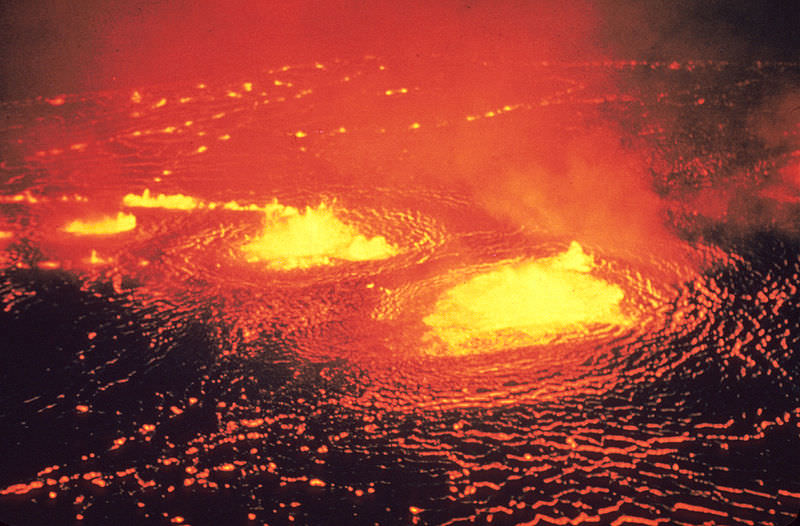Most volcanoes are dormant. They erupted millions of years ago, but then the Earth’s plate tectonics closed the vent or caused it to drift away. But some volcanoes are still active and erupt on a regular basis. Here are a list of the most active volcanoes in the world.
The most active volcano on Earth is Kilauea volcano on Hawaii. It’s the most recent of a series of volcanoes that created the Hawaiian archipelago of islands. They formed as a string of islands because the Pacific plate is slowly moving over the Hawaii hotspot. That’s why the islands of Kauai and Oahu are no longer active, but Kilauea is. This volcano only rises 1,247 meters above sea level, but it’s still growing. 90% of the surface of Kilauea is less than 1,100 years old, and there were 45 eruptions of the volcano in the 20th century alone. Even in 2008, there were explosive eruptions from Kilauea.
The second most active volcano in the world is Mount Etna, a composite volcano on the east coast of Sicily. It’s the largest active volcano in Europe, with an altitude of 3,329 meters. It’s in an almost constant state of eruption, but despite this, its flanks support extensive vineyards and orchards. Over the last few thousand years, it has experienced many eruptions. Ash from its eruptions have been found as far away as Rome, 800 km away. There are more than 300 volcanic vents across Mount Etna, ranging in size from small holes to massive craters, hundreds of meters across.
The third most active volcano is Piton de la Fournaise, which is French for the “Peak of the Furnace”. This is a shield volcano on the eastern side of Renunion island in the Indian Ocean. It has erupted in 2006, 2007 and in 2008 – with more than 150 eruptions since the 17th century. Piton de la Fournaise is referred locally as “le Volcan”, and stands at a height of 2,631 meters tall. It has many craters and cinder cones inside the volcano’s caldera and around its outer flanks.
We have written many articles about volcanoes for Universe Today. Here’s an article about how the dinosaurs might have been killed by both volcanoes and asteroids, and how they helped slow the ocean warming trend.
Want more resources on the Earth? Here’s a link to NASA’s Human Spaceflight page, and here’s NASA’s Visible Earth.
We have also recorded an episode of Astronomy Cast about Earth, as part of our tour through the Solar System – Episode 51: Earth.
References:
USGS Volcanoes Page: Kilauea
NASA Earth Observatory
USGS Volcanoes Page: Piton de la Fournaise

